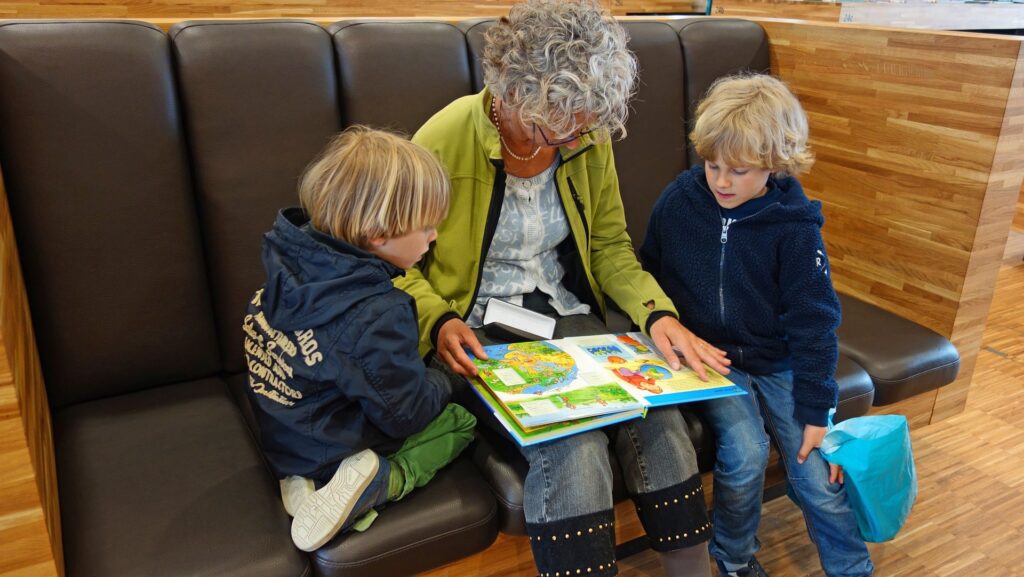26 Sept: European Day of Languages Five great ways to encourage language learning at home
Parlez-vous anything at all apart from English? If not, you may be encouraging your children to have negative attitudes to learning languages.
Former primary school teacher Becky Cranham, founder of school resource experts PlanBee, has some great ideas for getting the whole family enthused.
In Britain, we are notorious for being ‘bad at languages’. Being unable to communicate with the locals on European holidays can narrow your experience of a new culture, and it can leave you really hamstrung when your car breaks down on a remote country road.
Sadly, language learning is in free fall. The combined total number of pupils taking modern languages at GCSE last year was almost half that in 2001. But a recent study by academics at Cambridge University revealed that parents’ beliefs about languages had almost twice as much influence than those of their teachers.
In other words, children are more willing to learn languages at GCSE and A-level if their parents have positive attitudes to language-learning.
So with only 38% of Britons able to speak a second language, how can we encourage our children (and other adults in our household) to learn a second language, and which language should you choose?
French, Spanish and German have historically been the most popular languages to learn in the UK, but languages like Polish, Portuguese and Russian are also great choices, as well as non-European languages, such as Mandarin or Arabic.
Choose a language that your family is excited about and stick with it.

Daily phrases
The best way to learn a language is to embed it into your daily life. Start by identifying some phrases that you use every day, such as ‘Good morning’, ‘I need the toilet’, ‘What’s for dinner?’ or ‘I’m sorry’ and get into the habit of saying these in your chosen language whenever you can.
You could make it a family tradition to find a new phrase each week to learn and then see how many times you can use it.
You can download these blank Language Posters and just write in each phrase for your chosen language.
Using numbers, telling the time and using the days of the week are also easy ways of getting daily language practice in.

Read familiar stories
Reading fairy tales and other familiar stories in your chosen language is a brilliant way to help children become more fluent in a second language.
There are loads of videos on YouTube with stories in different languages that you can introduce children to. See if they can start identifying key vocabulary based on their knowledge of the story, and even read along with repeated phrases.
Sing songs
Singing songs is a really fun way to embed language learning. Start with familiar songs sung in your chosen language, such as nursery rhymes. You could also play children translated Disney songs or other film soundtracks, since most are translated into lots of different languages. Starting this way means children can relate their experience of the song to another language and spot keywords and word patterns. Why not listen to ‘The Lion King’ in Russian on the school run, or ‘Let it Go’ in Spanish as you cook dinner?
Watch films
Similarly, watching your children’s favourite film either in another language or with subtitles on means they can absorb some of the language whilst not losing the plot (so to speak). Doing this a few times a week and challenging children to find a few new words each time can really help increase their vocabulary as well as making the language more ‘real’.
Play games
Just like anything else, language games are a great way of helping children embed skills without them realising they are learning. The internet is awash with games for language learning but you can also adapt familiar games, such as Simon Says.
Start by doing just the ‘Simon says’ part in your chosen language, then gradually add in some other keywords. This is a brilliant way of introducing vocabulary for body parts and instructions, such as jump, clap or turn around.
Similarly, ‘What’s the time, Mr Wolf?’ is fantastic for helping children learn to tell the time in a second language.
Most importantly, model learning the language yourself. Show children how to find out translations for everyday words or phrases you use and spend time learning about the countries your chosen language is spoken in.
Get into the habit of replacing phrases from English into your second language regularly and showing children how to flow from one language to another. If you have fun with it, your children will be enthusiastic too, and the whole family will be chatting away in a second language before you know it!

| [donate]
| Help keep news FREE for our readersSupporting your local community newspaper/online news outlet is crucial now more than ever. If you believe in independent journalism,then consider making a valuable contribution by making a one-time or monthly donation. We operate in rural areas where providing unbiased news can be challenging. |



















